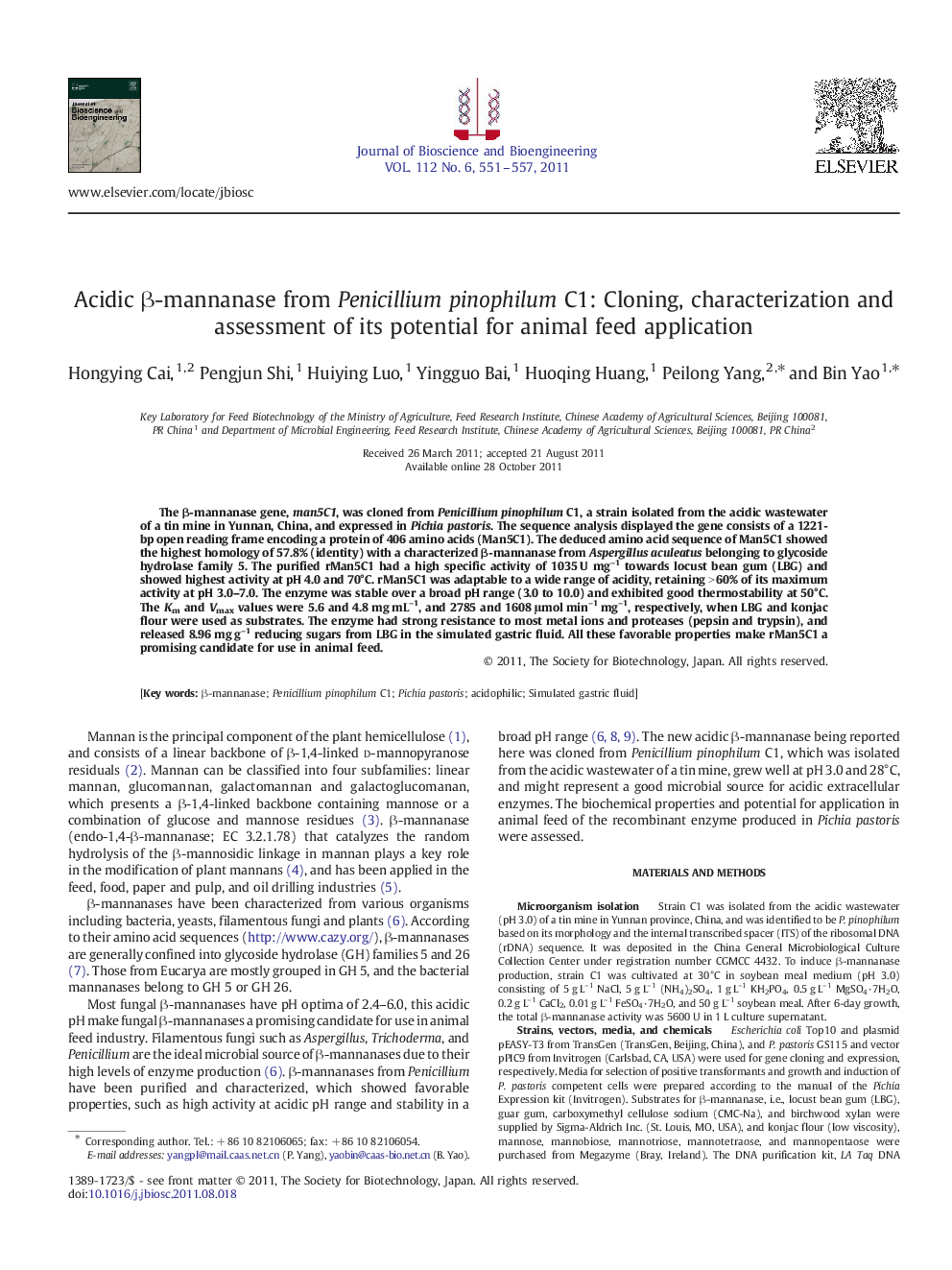| Article ID | Journal | Published Year | Pages | File Type |
|---|---|---|---|---|
| 20931 | Journal of Bioscience and Bioengineering | 2011 | 7 Pages |
The β-mannanase gene, man5C1, was cloned from Penicillium pinophilum C1, a strain isolated from the acidic wastewater of a tin mine in Yunnan, China, and expressed in Pichia pastoris. The sequence analysis displayed the gene consists of a 1221-bp open reading frame encoding a protein of 406 amino acids (Man5C1). The deduced amino acid sequence of Man5C1 showed the highest homology of 57.8% (identity) with a characterized β-mannanase from Aspergillus aculeatus belonging to glycoside hydrolase family 5. The purified rMan5C1 had a high specific activity of 1035 U mg–1 towards locust bean gum (LBG) and showed highest activity at pH 4.0 and 70°C. rMan5C1 was adaptable to a wide range of acidity, retaining > 60% of its maximum activity at pH 3.0–7.0. The enzyme was stable over a broad pH range (3.0 to 10.0) and exhibited good thermostability at 50°C. The Km and Vmax values were 5.6 and 4.8 mg mL–1, and 2785 and 1608 μmol min–1 mg–1, respectively, when LBG and konjac flour were used as substrates. The enzyme had strong resistance to most metal ions and proteases (pepsin and trypsin), and released 8.96 mg g–1 reducing sugars from LBG in the simulated gastric fluid. All these favorable properties make rMan5C1 a promising candidate for use in animal feed.
